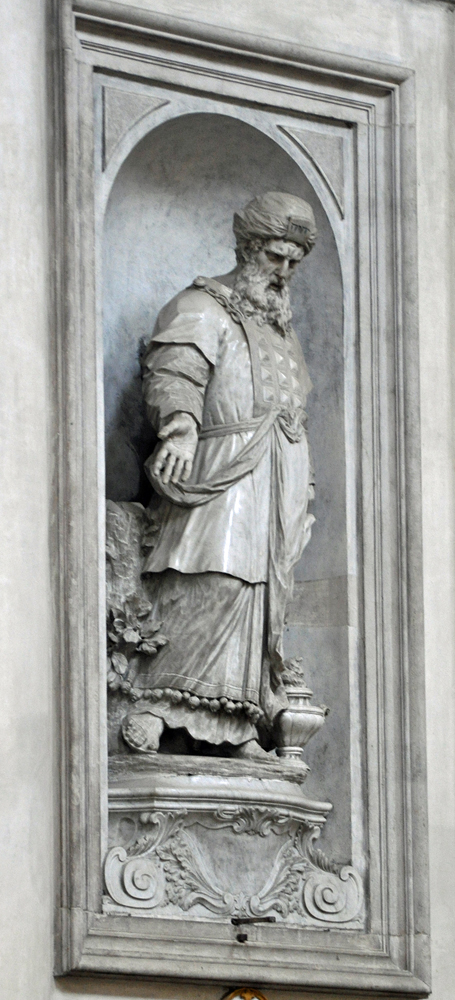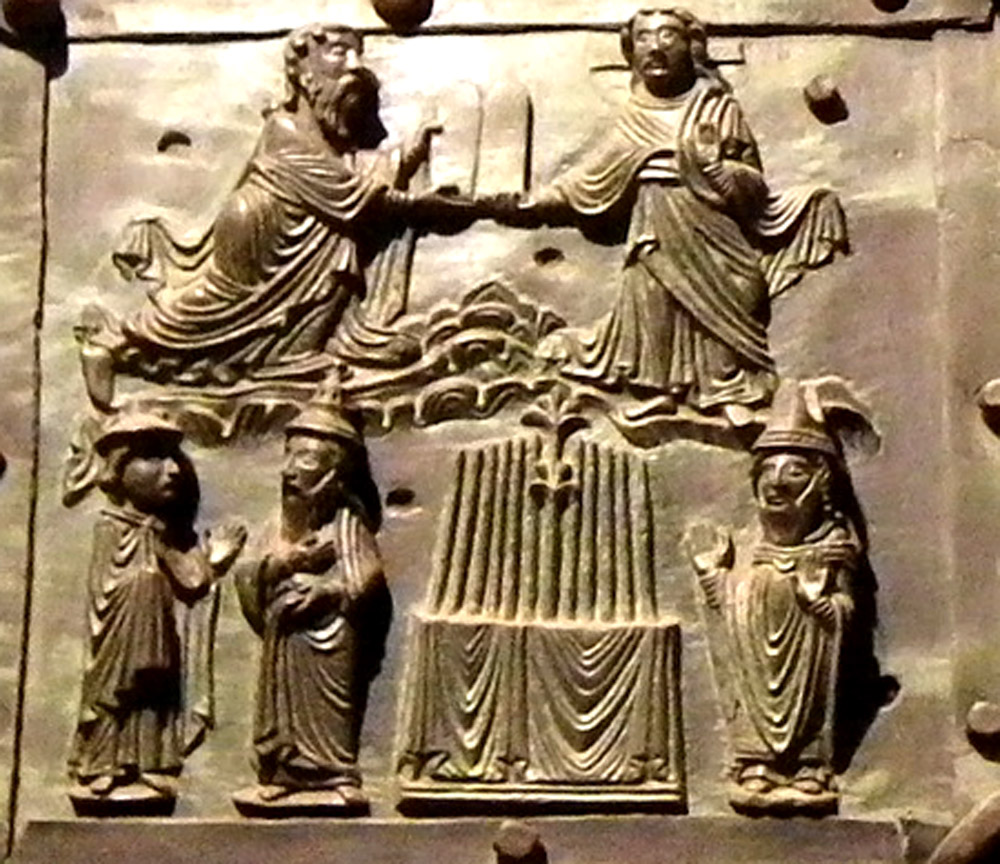In both medieval and later portraits Aaron will sometimes have a censer, as in the first picture at right. The reference is to the narrative in Numbers 16:41-50 (NAB 17:6-13). In his anger over the Israelites' grumblings, God sends a plague upon them. Seeing many of his people dying, Moses urges Aaron to cense them and pray that they be forgiven. Aaron does so, "and the plague ceased." Christians took these actions of Aaron's to be a type of the Christian liturgy and of Christ's intercession for his Church.2 This is the idea behind the image of Aaron on this portable altar from the 11th century:

Some of the incidents from Exodus in which one is likely to see Aaron include the Fall of Manna (see Moses), his investiture, his brief challenge to Moses' authority, and the brass serpent. Several others are listed in Kirschbaum, s.v. "Aaron." Kirschbaum also reports that sometimes the sculptures of the prophets in medieval portals will include Aaron and his flowering staff.
Prepared in 2014 by Richard Stracke, Emeritus Professor of English, Augusta University.
HOME PAGE

Morlaiter's statue of Aaron in the "Gesuati" church, Venice. The censer sits at his left foot. See description page for an explanation of the details of his vestments.

Detail from a brass door at San Zeno, Verona. The lower register depicts the miracle of Aaron's staff. (See description page)
MORE IMAGES
- 3rd century: Detail of Aaron and the Temple from the synagogue at Dura-Europos, modern Syria.
- 5th century: Aaron and Hur stand by as Moses holds his arms up in The Battle Against the Amalekites, one of the panels in the Old Testament mosaics in Santa Maria Maggiore, Rome.
- 12th or 13th century: Episodes involving Moses and Aaron are used typologically in five of the panels in a window in Canterbury Cathedral.
- 13th century: A fresco in Berghausen, Germany, depicts the miracle of the shafts and Samson's destruction of the Philistine temple.
- 1304-1310: In a miniature in the De la Twyere Psalter Aaron's rod turns into a snake.
- 17th or 18th century: Painting of Moses and Aaron worshiping the Trinity.
- Circa 1875: Statue with other Old Testament sacrificiants, Notre-Dame de Montréal.
- Undated (Baroque?): Aaron and Miriam are pictured at the base of Mt. Sinai in The Giving of the Ten Commandments at San Moise, Venice.
ALSO SEE
NOTES
1 The Vulgate calls the headpiece a cidaris and a tiara at Exodus 28:4, 37 respectively. Neither word seems to imply a horn shape, and Nicolas de Lyra specifically denies that it was shaped "in the manner of a horned moon, as some say" (Glossa Ordinaria, I, 783-84, my translation). Lewis and Short defines cidaris as "diadem, tiara" and says it is from the Persian. Perhaps there is a connection between the Vulgate's use of the word and the Persian garb on the portrait of Aaron at Dura-Europos (see above under "more images").
2 Glossa Ordinaria, I, 1281-82.
3 Glossa Ordinaria, I, 1283.